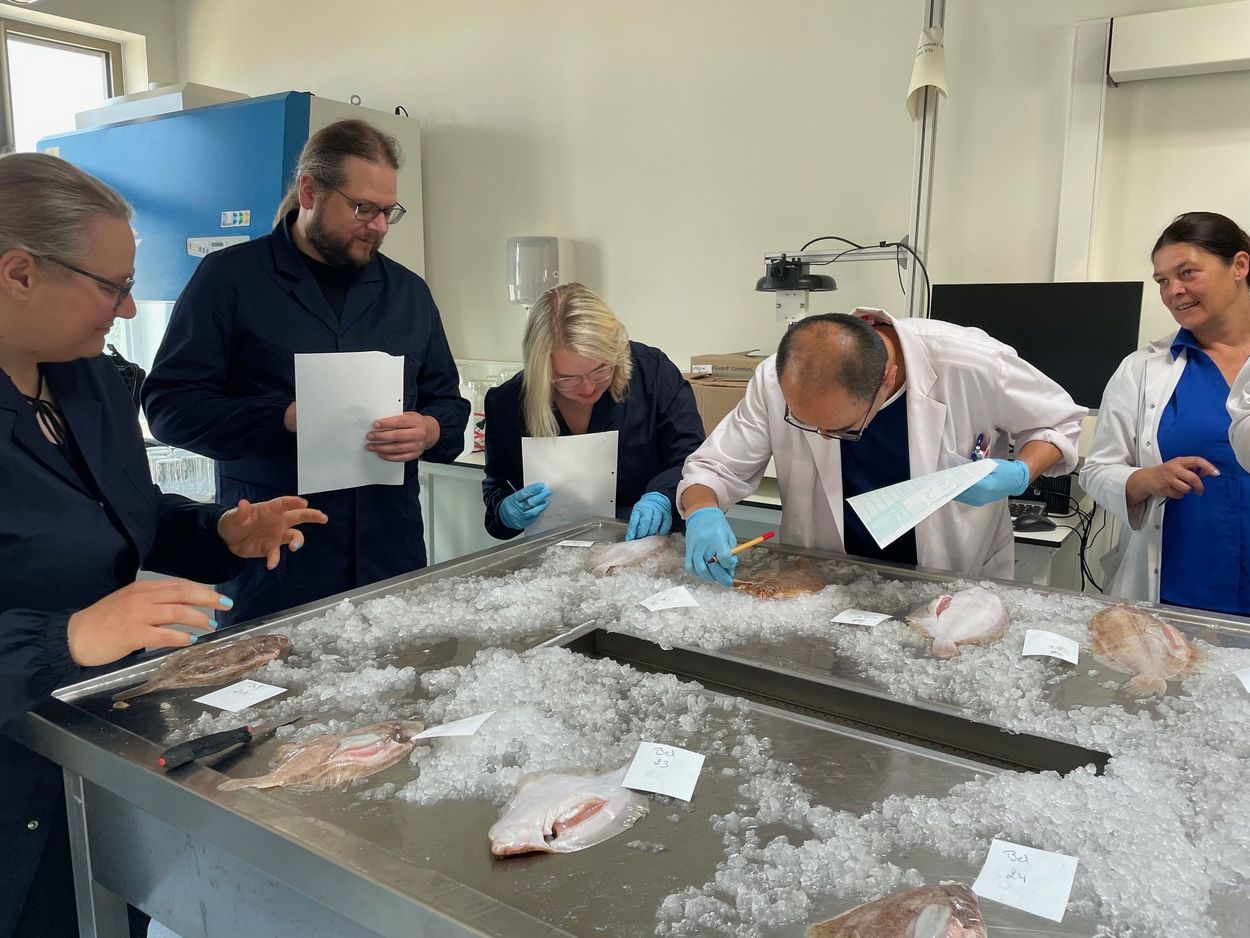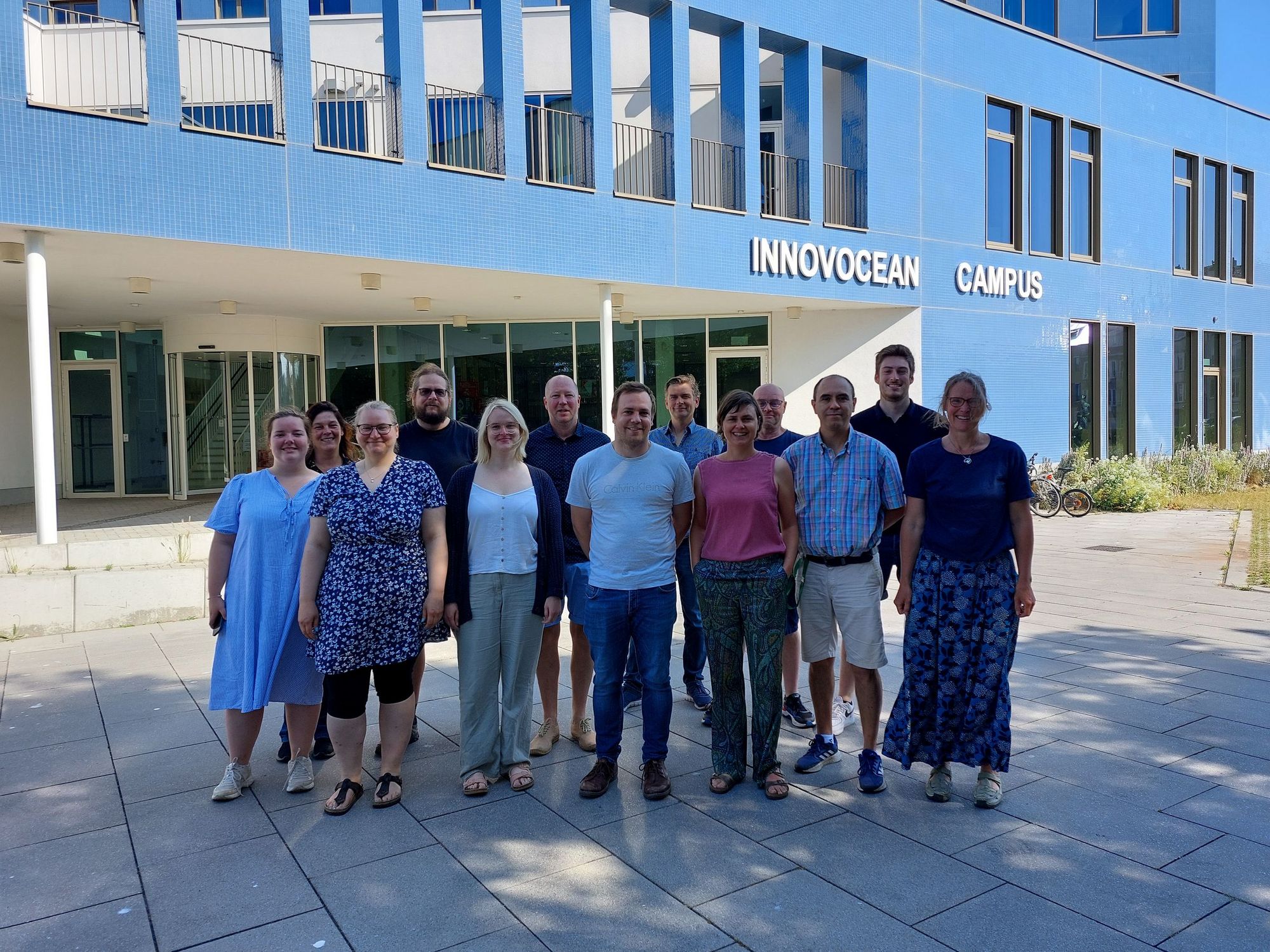From 24 to 26 June, the Belgian Fisheries Research Institute in Ostend hosted a workshop on determining the stage of maturity of lemon sole (Microstomus kitt). Participants came from Belgium, the Netherlands and Germany. Annika Elsheimer, Simon Wieser and Svea Winning from our institute were also present.
The aim of the workshop was to compare the methods and results of maturity staging between the representatives of the three countries and to develop a standardised strategy.
During the workshop, the sex and stage of maturity of a total of 50 fish were determined in the laboratory and of 90 fish on the basis of photos. Histological examinations were also carried out to complement the macroscopic identification. After each exercise, the results of the participants were compared and discussed. The sex characteristics and the stages of maturity were then determined.
The preliminary result: it's tricky.
In general, the consitency between the participants in determining the sex was "good". When it came to determining the stage of maturity, the participants agreed on certain characteristics that characterise each stage of maturity. However, it was also found that this was very difficult with the lemon sole. Also because the lemon sole is a so-called "batch spawner", the different stages of maturity cannot be clearly separated from each other and different results are always obtained. It was therefore repeatedly discussed that the emphasis should be placed on distinguishing between juveniles that are not yet ready to spawn and adults that are ready to spawn.
We would like to thank the Belgian institute ILVO-Flanders Research Institute for Agriculture, Fisheries and Food for their warm hospitality and our Dutch colleagues from Wageningen University for the excellent organisation.

![[Translate to English:] [Translate to English:]](/media/_processed_/7/1/csm_IMG_7977_large_1defaf5de1.jpg)







